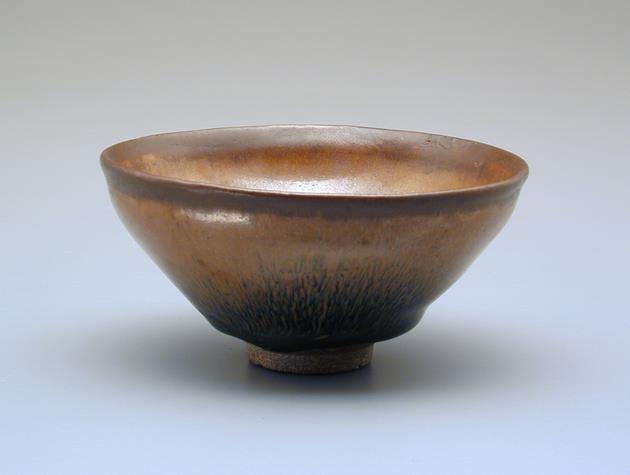Tea bowl with "hare's fur" decoration
1127-1279
Chiefly for domestic use—in the Song to the 14th century, for example—by Chan (Zen) Buddhist monks in the Fujian region. Japanese Chan monks studying in China prized jian tea bowls, carrying them back to Japan where they became central elements of the Japanese tea ceremony. Tea connoisseurs admired the thick, unctuous glaze, and especially pieces with streaks resembling hare’s fur, mottling like partridge markings, or iridescent “oil spot” splatters. The bowls’ deep brown and black colors contrasted with the white froth of whipped tea.
Jian ware; stoneware with brown glaze and black hare's fur-like short streaks
2 7/16 in. (6.19 cm)
Diam.: 4 5/8 in.
Eugene Fuller Memorial Collection
50.35

